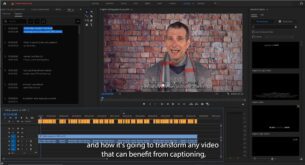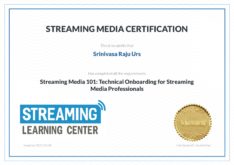New offerings in cloud video encoding let companies both large and small find the option that makes the most sense for them.
The benefits of cloud encoding have been clear from the start: less capital expenditure (CAPEX) for encoding gear and the facilities to store it in, and fewer up-front costs for expensive licenses. For many years, however, cloud encoding was available almost exclusively through two models: software as a service (SaaS) and platform as a service (PaaS), which were too expensive for some potential users. New models expand flexibility and affordability and should make cloud encoding more attractive to a broader range of potential customers.
The original cloud encoding shops used the SaaS model, where the service provider developed the software and provisioned all cloud machines. Pricing was based upon throughput, either gigabytes or minutes, in some combination of input and output. One criticism of this model is that most SaaS shops charge the same for encoding and transmuxing, even though these operations require vastly different amounts of machine time. In an era where support for multiple ABR platforms is essential, SaaS pricing was too expensive for some producers.
Then Elemental Technologies deployed using the PaaS model, where customers reserve a set number of encoding hours and nodes. Customers pay for the hours and push as many encoding chores through the system as it can handle during those hours. In August 2015, Encoding.com launched its own PaaS pricing model that lets customers reserve a dedicated computer running the Encoding.com system for a monthly price starting at $2,000. This allows its customers to compare SaaS and PaaS pricing and to choose the best pricing option for their encoding needs.
Over the last 12 months, Telestream has bolstered its cloud offerings to the extent that it recently ended support for Telestream Episode, its desktop solution. Via its acquisition of PandaStream, the company launched Telestream Cloud, a SaaS platform, which prices by the minute for output. The company also expanded its Vantage Cloud offering, which allows users to configure a Vantage domain with the features and capacity needed for the job at hand. There are three packages with different feature sets, ranging in price from $5 to $30 per hour.
Of course, you could always license multiple encoders and install them in the cloud, avoiding the CAPEX and hardware-related operating expenditure (OPEX) charges of buying workstations to install in your facility. While queue management to reduce the cost of spinning up machines is generally included in these products, more sophisticated features, such as bidding for low-cost cloud machines during off hours, typically aren’t. There’s also no inherent scalability, though with some vendors, you can easily push encodes to their SaaS or PaaS cloud when your needs exceed your licensed capacity.
Despite the various product and service options, many large encoding shops such as Netflix and YouTube develop their own encoding workflows that run in the cloud. Presumably, this is more cost-effective than acquiring the encoding services from a third party, and/or they need the flexibility that only a homegrown workflow can provide. Still, it’s undeniably expensive.
A new company with an intriguing pricing model is targeting the affordability side of that equation. Specifically, Hybrik has created a cloud encoding platform that runs on Amazon Web Services and charges by the number of cloud computers the system can address. The ability to address 1,000 computers costs $10,000 per month, 100 computers costs $5,000 per month, and 10 computers costs $1,000 per month. (Full disclosure: I am consulting with Hybrik to test and debug its platform.) The customer pays all computer charges directly to Amazon.
Most small encoding shops will be best served with traditional SaaS pricing. However, larger companies now have multiple options for accessing cloud encoding. Obviously, each system’s ability to supply the required formats and features and to integrate into your existing workflows is critical. Beyond that, however, exploring the various options could lead to significant savings that might justify finally moving to the cloud.
 Streaming Learning Center Where Streaming Professionals Learn to Excel
Streaming Learning Center Where Streaming Professionals Learn to Excel







